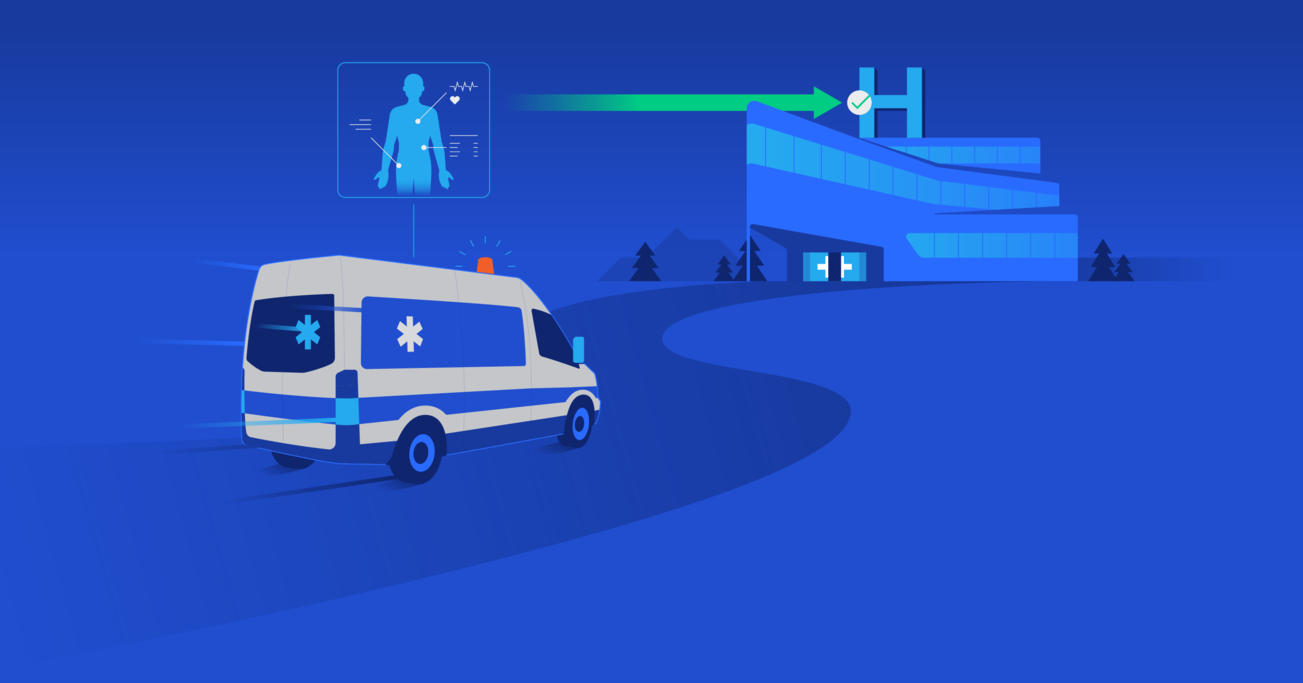Prioritizing Health Pros' Pain Points in Connected Medical Device Design
In life-or-death situations, Internet of Medical Things-enabled devices are helpful only if healthcare professionals are willing to use them.
In life-or-death situations, Internet of Medical Things-enabled devices are helpful only if healthcare professionals are willing to use them.
Kyle Kotowick, PhD (MIT ‘18), is a solutions architect, an innovator, and the Founder and CEO of Invicton Labs.
PREVIOUSLY AT

Have you ever entered a hospital ward reverberating with noisy alarms or seen a TV show with frantic medics trying to stabilize a patient in an ambulance while radioing vital signs to a hospital worker? Maybe you’ve thought what I have: “There must be a better way.”
There’s a wry saying in the technology industry: “Designed by engineers, for engineers.” That’s because when technical experts design systems or products, they tend to expect that their users will be like themselves: willing and able to learn the system’s details and interested enough in the product and the technology to put in the effort to use it as intended. Unfortunately, this is almost never the case. End users, particularly in high-stress environments like emergency medicine, have other obligations. Welcome to the messy world of interconnected medical systems.
I’ve worked on both sides of this issue. I completed my doctorate in human systems integration at the Massachusetts Institute of Technology, where I designed systems and devices for people operating under extreme, high-stress conditions. Simultaneously, I worked as an EMT, responding to 911 calls in the Boston and Cambridge, Massachusetts areas. Today, I lead Invicton Labs, a Canadian company that consults on and prototypes interconnected devices, commonly referred to as the Internet of Things (IoT), and I’m a member of the Toptal talent network.
Designing for Real Life
The previous hospital and ambulance scenarios illustrate the problem of designing connected medical devices without considering the end users or their environment. The incessant alarms in a hospital ward? They’re cardiac monitors and pulse oximeters, connected medical devices alerting the staff when they lose a signal. And they lose signals often because they’re accidentally disconnected when patients move. Ultimately, the staff becomes numb to the constant alerts, negating the devices’ entire purpose. These incredibly expensive connected medical devices don’t work as intended because they weren’t designed for the realities of the environment where they are used.
Then there are medics, who have read patients’ vital signs over a public-safety radio for decades because it’s simple and reliable. Until relatively recently, this was the only way to convey this information. Modern networking technology, though, can automate the process. A smart cardiac monitor wirelessly connects to the ambulance’s mobile hot spot and sends vital signs directly to the hospital. This capability is already built into many emergency medical products, yet most EMTs still use radio.
Why? These medical professionals often work in life-or-death situations, and they expect reliable tools. For most users, particularly those firmly attached to the “old ways” of doing things, you get one chance to impress them before they write off your system as unnecessarily complex technology that makes their work harder, not easier.
This is why strong product design is critical. Systems that continuously trigger false alarms, such as those hospital monitors, quickly lose credibility. When engineering teams design medical devices, they must incorporate end users in every step of the process through focus groups and using doctors and nurses as consultants. The real-world experience they provide helps designers and engineers create a product capable of handling situations that don’t arise in the test lab.
Making the Intended Use Intuitive
The end users’ environments and stressors are often different than engineers, technicians, and developers might expect. The people who will be relying on these systems—paramedics, nurses, and physicians—are focused on patients and their care. Technology is simply a means to achieve that goal. For them to use it as the designer plans, the intended use should also be the intuitive use. The user must naturally want to use the system the way it should be used.
The most effective connected medical devices aren’t created in a tech vacuum. Their development teams include a product manager who coordinates focus groups and product testers to bridge the gap between the team’s vision and the users’ practices.
Every engineer has their own way of doing things. This might not be an obstacle on small, contained projects, but it can cause chaos when interconnectivity is involved. Devices that can’t talk to each other, be integrated with new systems later, or be maintained by a third party are essentially useless as a long-term solution. The only way to encourage compatibility is for a technical lead or lead architect to decide which standardized designs, interfaces, and protocols to use—and ensure they are followed everywhere possible.
Building Trust
In the medical world, people regularly work under extreme pressure. As an EMT running 911 calls in Boston, I would often have only a few minutes to collect vital information and deliver it over the radio to the receiving hospital. I needed the tools I was using to work flawlessly the first time. It’s hard to build trust in a device, but it’s extremely easy to lose that trust if it fails even once.
Reliability is paramount in an environment where the stakes are high. Every component, from power to wireless connectivity, needs to work seamlessly. From an engineering standpoint, this is one of the most difficult aspects to get right. It requires not only automated detection of a system failure, but also an automated transition to a backup system (“failover”), such as shifting from a mobile Wi-Fi hot spot to built-in cellular data when the former malfunctions. This is why rigorous testing and quality assurance are essential; your system must be tested to its breaking points under real-world conditions to be sure it performs the way it should.
Putting Users First
In the case of the interconnected hospital monitors, we can see that the nurses, after running to check them the first few times they sound, lose faith in their accuracy and suitability for a hospital environment. The paramedic trying to use the cardiac monitor’s automated data upload system may give up for several reasons: because it’s too complex to use, it loses network connectivity, or the receiving hospital can’t accept the format of the uploaded data.
Devices need to be designed and built for the environments where they are deployed and for the people who use them. Engineers, developers, and designers need to consistently involve end users. These nontechnical people are vital to the design, testing, and evaluation processes. Because when you’re creating connected medical devices, you strive to create equipment that medical providers can confidently rely on when people’s lives are on the line.
Kyle Kotowick, Ph.D.
Ottawa, ON, Canada
Member since January 10, 2019
About the author
Kyle Kotowick, PhD (MIT ‘18), is a solutions architect, an innovator, and the Founder and CEO of Invicton Labs.
PREVIOUSLY AT


